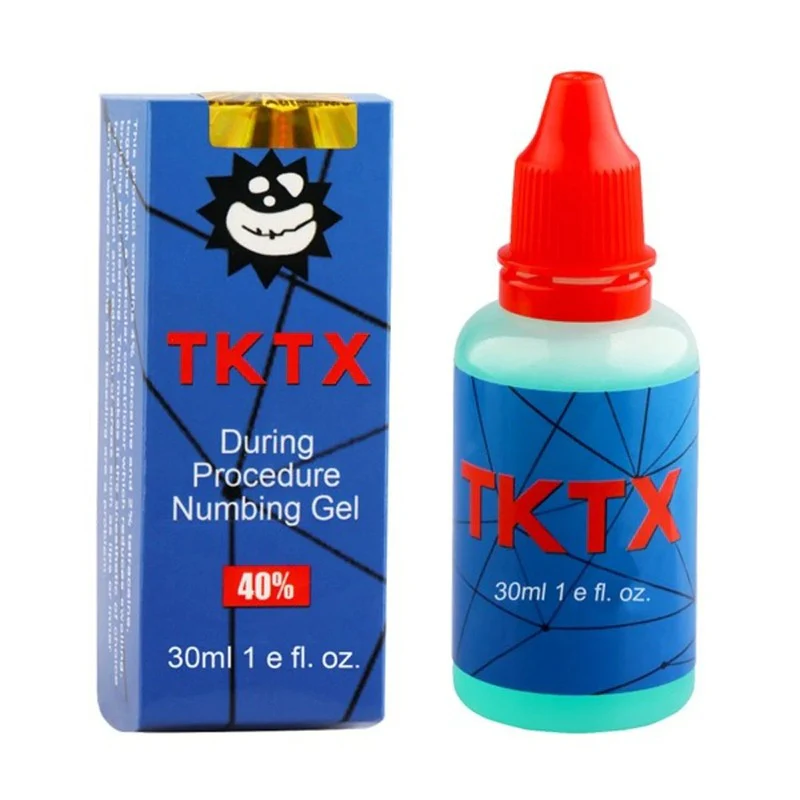Getting a tattoo inked is an exciting experience, but the thought of enduring the ensuing pain can be daunting. Many people opt for a numbing gel to make the process more comfortable. Knowing how to apply this gel effectively can significantly improve your tattoo experience. This guide offers expert advice on using the numbing gel to ensure maximum comfort during your tattoo session.
Understanding Numbing Gel
Numbing gel, commonly used in the tattoo industry, helps alleviate pain by numbing the skin where the tattoo will be placed.
The effectiveness of numbing gel depends on the quality of the product and how well it is applied. When used correctly, numbing gel can help you endure longer sessions with less discomfort, allowing the artist to work more efficiently.
Ensuring the correct application of numbing gel is crucial for achieving its full benefits. High-quality numbing gel can last for several hours, which is especially beneficial for large or intricate tattoo designs that require extended sessions.
Seven Tips For Applying a Numbing Gel Before Getting A Tattoo
Here are seven tips for applying a numbing gel before getting a tattoo:
1. Choose A High-Quality Numbing Gel
Selecting a reputable numbing gel is essential. Look for products that are specifically designed for tattooing care and have positive reviews.
High-quality gels contain effective active ingredients that penetrate the skin deeply, providing longer-lasting numbing effects. Ensure the product is suitable for your skin type to avoid allergic reactions. Some popular active ingredients in numbing gels include lidocaine and prilocaine, known for their numbing properties.
Research different brands and read user reviews to find a product that has a proven track record of effectiveness and safety.
2. Prepare Your Skin Properly
Clean the area thoroughly before applying the gel. Use an antibacterial soap to remove dirt, oil, and any bacteria that could cause infections.
Pat the area dry with a clean towel. Proper skin preparation ensures the numbing gel is absorbed effectively, enhancing its performance. Avoid using any lotions or oils on the skin before applying the gel, as these can create a barrier that prevents the numbing agents from penetrating.
Exfoliating the skin gently with a mild scrub can also help by removing dead skin cells and allowing better absorption of the gel.
3. Apply A Generous Layer
Apply a thick layer of numbing gel to the tattoo area. The gel should cover the skin completely without being rubbed in.
Covering the area with a generous amount allows the gel to penetrate the skin more effectively. Wrap the area with plastic wrap to prevent the gel from drying out and to help it absorb better. The plastic wrap also helps to trap heat, which can enhance the numbing effect.
Be sure to follow the instructions on the gel packaging regarding the amount to use and the recommended duration for keeping it covered.
4. Allow Sufficient Time For Absorption
Time is a critical factor in the effectiveness of a numbing gel. Most products require at least 30 to 45 minutes to take effect.
Follow the instructions on the packaging to ensure you allow enough time for the gel to numb the area adequately. Plan your tattoo session accordingly to incorporate this waiting period. Some gels might take up to an hour to reach full potency, so it’s crucial to schedule your appointment with this in mind.
Setting a timer can help you track the absorption period accurately, ensuring the gel has enough time to work before the tattooing begins.
5. Monitor The Area For Allergic Reactions
Even if you’ve used a numbing gel before, it’s wise to test a small patch of skin beforehand. Some people may develop allergic reactions, which can cause swelling, redness, or itching.
If any adverse reactions occur, rinse the area immediately and seek medical advice if necessary. Using the gel safely will prevent complications during your tattoo session. To conduct a patch test, apply a small amount of gel to an inconspicuous area of skin and wait 24 hours to see if any reaction develops.
This precaution can save you from experiencing discomfort or complications during your tattoo appointment.
6. Reapply As Needed
During long tattoo sessions, the numbing effect may wear off. Consult with your tattoo artist about reapplying the gel.
Ensure the skin is clean before reapplying to avoid trapping dirt under the gel. Reapplying can help maintain comfort throughout the session, allowing the artist to work without interruptions. It’s essential to communicate with your artist about your comfort level and any sensations you experience as the session progresses.
Some numbing gels come in convenient packaging that makes reapplication easier, so consider bringing the product with you to your appointment.
7. Follow Post-Tattoo Care Instructions
After the tattoo session, follow your artist’s aftercare instructions diligently. This includes cleaning the area and applying any recommended ointments.
Proper aftercare ensures your tattoo heals well and prevents infections. Continuing to care for the tattooed area maintains the benefits of the numbing gel, helping you recover quickly. Your artist may suggest specific products to aid in healing, such as fragrance-free moisturisers or specialised tattoo balms.
Keeping the area clean and hydrated is crucial during the initial healing phase to avoid scabbing and ensure the tattoo retains its vibrant appearance.
Conclusion
Applying a numbing gel correctly before your tattoo session can make a significant difference in your overall experience. By following these expert tips, you can ensure maximum comfort. Remember to follow the recommended guidelines and consult with your tattoo artist if you have any concerns. With the right preparation, you can enjoy the tattooing process with minimal discomfort.
Keep an eye for more news & updates on Vents Fashion!

